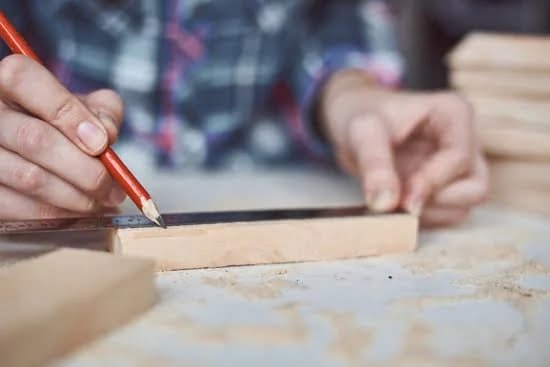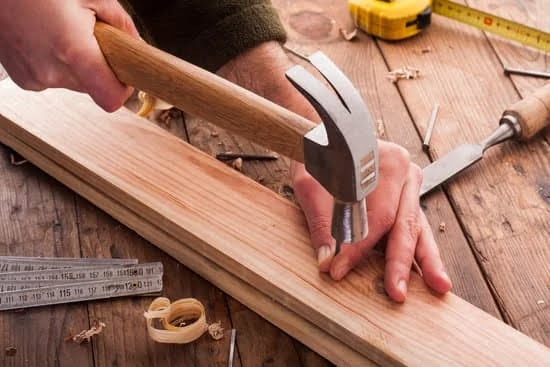Are you interested in learning how to design woodworking plans? Knowing how to design effective and well-structured woodworking plans is crucial for anyone involved in woodworking, whether you are a beginner or an experienced woodworker. In this article, we will delve into the importance of well-designed woodworking plans and provide a comprehensive guide on how to create them.
Designing woodworking plans is a fundamental aspect of any woodworking project. It serves as a blueprint that guides woodworkers through the entire process, ensuring precision, efficiency, and safety. Whether you are crafting a simple furniture piece or embarking on a complex carpentry project, having meticulously designed woodworking plans can make all the difference in the outcome.
In the following sections, we will explore the various elements involved in designing woodworking plans, including skill levels, essential tools and materials, measurements and calculations, design elements, step-by-step processes, tips and tricks for efficiency, and the importance of finalizing and testing your plans before use. By understanding these key components, you will be equipped with the knowledge and skills needed to create high-quality woodworking plans for your projects.
Skill Level
Designing woodworking plans can be a rewarding and fulfilling endeavor, but it is important to understand the different skill levels and how they impact the design process. Whether you are a beginner or an experienced woodworker, the level of expertise will influence the complexity and detail required in your woodworking plans.
For beginners, starting with simple projects and plans is essential to build foundational skills. These plans should focus on basic techniques and require minimal tools and materials. As skill level progresses, intermediate woodworkers can incorporate more intricate designs and advanced joinery techniques into their plans. Advanced woodworkers have the expertise to tackle complex projects that demand precision and creativity in their woodworking plans.
Factors to Consider When Designing Woodworking Plans for Different Skill Levels
- Complexity of design: Beginners should start with simple designs, while advanced woodworkers can take on more intricate projects.
- Required tools and materials: Plans should align with the available tools and materials based on skill level.
- Step-by-step instructions: Beginner plans need detailed step-by-step instructions, while advanced woodworkers may only require minimal guidance.
When designing woodworking plans for different skill levels, it is crucial to consider the accessibility of tools and materials, as well as the clarity of instructions for each group. By tailoring the plan to suit different skill levels, woodworkers can ensure a more satisfying experience and successful outcome.
Tools and Materials
Woodworking plans are essential for any woodworking project, as they serve as a guide for the construction process. Designing these plans requires careful consideration of tools and materials that will be needed to complete the project. Understanding what tools and materials are necessary is key to creating effective woodworking plans that can be easily followed by others.
When considering the tools needed for designing woodworking plans, it’s important to think about both traditional hand tools and power tools. Hand tools such as chisels, hand saws, and planes are often used in fine woodworking, while power tools like table saws, drills, and routers can make the design process more efficient. Additionally, measuring and marking tools such as tape measures, squares, and marking gauges are crucial for ensuring accurate dimensions in the plans.
In terms of materials, it is essential to consider the type of wood that will be used for the project. Different woods have unique characteristics that can impact the design and construction process. Additionally, other materials such as adhesives, finishes, and hardware should also be included in the plan to ensure that all necessary components are accounted for before beginning the project.
| Tools | Materials |
|---|---|
| Chisels | Wood (e.g. pine, oak, maple) |
| Saws (hand saws and power saws) | Adhesives (e.g. wood glue) |
| Planes | Finishes (e.g. varnish or stain) |
| Tape measures and squares | Hardware (e.g. screws, nails) |
Measurements and Calculations
When it comes to designing woodworking plans, one of the most crucial aspects is ensuring accurate measurements and calculations. Without proper measurements, a woodworking project can quickly go awry, resulting in frustration and wasted materials. In this section, we will delve into the importance of precise measurements and calculations in the design process and explore how to achieve accuracy in your woodworking plans.
Choosing the Right Measuring Tools
Before you begin designing your woodworking plans, it’s essential to have the right measuring tools at your disposal. This includes tape measures, rulers, squares, and calipers. Each tool serves a specific purpose, and understanding how to use them correctly is key to obtaining accurate measurements. Additionally, investing in high-quality measuring tools can make a significant difference in the precision of your woodworking plans.
Understanding Wood Dimensions
Wood dimensions can vary based on factors such as moisture content and type of wood. It’s important to take these variations into account when creating woodworking plans. Understanding how different wood species behave and how they may change over time will allow you to make necessary adjustments to your measurements to accommodate for potential changes in dimension.
Utilizing Math and Geometry
Incorporating mathematical principles and geometric concepts into your woodworking plans is essential for ensuring structural integrity and proper fitment of components. This includes calculating angles, determining proportions, and understanding spatial relationships between different elements of a project. By applying math and geometry to your design process, you can create more accurate and reliable woodworking plans that are less likely to result in errors during construction.
By paying close attention to measurements and calculations during the design phase of your woodworking plans, you can significantly improve the overall quality of your projects. Taking the time to understand wood dimensions, utilize the right measuring tools, and apply math and geometry principles will ultimately lead to more precise and successful outcomes for your woodworking endeavors.
Design Elements
When designing woodworking plans, incorporating proper design elements is crucial for ensuring both functionality and aesthetics. The design elements of a woodworking plan can greatly impact the usability and visual appeal of the final product. Whether you are designing plans for a simple bookshelf or a complex piece of furniture, considering the design elements will ultimately determine the success of your project.
One important aspect of incorporating proper design elements is understanding the principles of form and function. This involves considering how the piece will be used and making design choices that enhance its usability while also creating an attractive overall appearance. For example, when designing plans for a table, you must consider factors such as height, width, and stability to ensure that it serves its purpose effectively.
In addition to function, aesthetics play a significant role in woodworking plans. Design elements such as proportions, symmetry, and detailing can elevate a simple piece to a work of art. Factors like wood grain direction, joinery techniques, and decorative touches should all be carefully considered during the planning phase. Ultimately, striking the right balance between functionality and aesthetics is key to creating well-designed woodworking plans.
When learning how to design woodworking plans, it’s important to educate yourself on various design principles and styles. By studying different woodworking styles and techniques, you can gain inspiration for incorporating unique design elements into your own plans. Additionally, seeking guidance from experienced woodworkers or taking design courses can provide valuable insight into creating plans that are not only structurally sound but also visually appealing.
Step-by-Step Process
Designing woodworking plans requires careful consideration and planning to ensure that the final product is not only functional but also safe and aesthetically pleasing. Whether you are a beginner or an experienced woodworker, understanding the step-by-step process can help in creating effective and efficient woodworking plans.
Gather Information and Inspiration
Before diving into the actual design process, it’s essential to gather information and inspiration. This can include researching different woodworking styles, techniques, and existing designs. Look for inspiration from professional woodworking plans, online resources, or even nature. By gathering as much information as possible, you can begin to form a clear idea of what you want your final product to look like.
Sketch Out Your Design
Once you have gathered enough inspiration, it’s time to start sketching out your design. You don’t have to be a professional artist to create a rough sketch of your plan. The purpose of this step is to visualize how your finished project will look and identify any potential design flaws or improvements. It’s important to include accurate measurements in your sketches to ensure that all components fit together properly.
Create Detailed Plans
After finalizing your sketch, the next step is to create detailed woodworking plans. This involves breaking down the project into individual components and creating specific instructions for each part. Consider including detailed measurements, joinery techniques, material lists, and assembly instructions. The level of detail will depend on the complexity of the project and the intended audience for the plans.
By following these steps, you can effectively transform your initial idea into comprehensive and detailed woodworking plans that anyone can follow with ease.
Tips and Tricks
Designing woodworking plans requires careful consideration of various factors to ensure the end product is both functional and aesthetically pleasing. Here are some helpful tips and tricks for creating efficient and effective woodworking plans:
- Take the time to understand the project: Before diving into the design process, it’s crucial to fully comprehend the scope and requirements of the woodworking project. This includes taking measurements, understanding the objectives, and considering any specific needs or constraints.
- Utilize software for precision: Utilizing design software can greatly improve the precision and accuracy of your woodworking plans. Software programs allow you to create detailed 3D models, generate precise measurements, and even simulate how the final product will look.
- Consider ergonomics and functionality: When designing woodworking plans, it’s essential to consider ergonomics and functionality. This involves thinking about how people will interact with the final product, ensuring that it is comfortable to use and serves its intended purpose effectively.
In addition to these tips, there are several other considerations in designing woodworking plans that can make a significant difference in the quality of the final product. By carefully planning each step of the design process, woodworkers can create detailed and thorough plans that guide them through a successful project from start to finish.
Finalizing and Testing
Designing woodworking plans requires careful consideration of various factors to ensure that the final product is not only functional but also aesthetically pleasing. The finalizing and testing stage is crucial in this process, as it allows the designer to make any necessary adjustments and ensure that the plans are ready for use.
One of the most important aspects of finalizing woodworking plans is to double-check all measurements and calculations. Even a small error in measurement can lead to a flawed final product, so it’s vital to take the time to review all dimensions and calculations before finalizing the plans. Additionally, it’s essential to consider how the design elements will come together in the final product, such as joinery techniques, wood grain direction, and overall aesthetics.
Testing the plans before use is equally important in ensuring that they are practical and effective. This involves creating a prototype or mock-up of the project using cheap or scrap materials to identify any errors or issues with the design. Testing also helps in evaluating the functionality of the project and making any necessary modifications before moving forward with construction.
| Aspect | Importance |
|---|---|
| Double-check measurements | Ensures accuracy and prevents errors |
| Consider design elements | Ensures functionality and aesthetics |
| Testing before use | Identifies errors and ensures practicality |
Conclusion
In conclusion, understanding the importance of well-designed woodworking plans is essential for both amateur and experienced woodworkers. Whether you are a beginner or an expert in the craft, having a comprehensive and accurate plan can make all the difference in the outcome of your project. By following the steps outlined in this article, you can effectively design woodworking plans that will guide you through each project with efficiency and precision.
It is important to consider the different skill levels of woodworkers when designing plans. Beginners may need more detailed instructions and visuals, while experienced woodworkers may require less guidance. Additionally, incorporating proper design elements for functionality and aesthetics is crucial in creating plans that not only serve as guides but also enhance the overall look and usability of the finished product.
Finally, it is crucial to remember that finalizing and testing the plans before use is an essential step in ensuring their accuracy and effectiveness. By taking the time to review and test your designs, you can identify any potential issues or areas for improvement before beginning your project.
Armed with this newfound knowledge on how to design woodworking plans effectively, readers are encouraged to apply these principles to their future projects and enjoy the satisfaction of bringing their creations to life.
Frequently Asked Questions
Is SketchUp Good for Woodworking?
SketchUp is indeed a good tool for woodworking as it allows woodworkers to create and visualize their designs in 3D. It provides accurate measurements, detailed modeling, and the ability to test different design options before starting the actual woodworking project.
How Do You Plan a Woodwork Project?
Planning a woodwork project involves several steps such as determining the type of wood to be used, creating a detailed design or blueprint, calculating the required materials, considering tools needed, and planning for safety measures. It’s important to also consider any potential challenges or obstacles that may arise during the woodworking process.
What Is the SketchUp Guide for Woodworkers?
The SketchUp guide for woodworkers is a comprehensive resource that provides tutorials, tips, and techniques specifically tailored for those working with wood. It covers everything from basic modeling to more advanced woodworking concepts, helping users learn how to effectively use SketchUp as a tool for their woodworking projects.

Hi everyone! I’m a woodworker and blogger, and this is my woodworking blog. In my blog, I share tips and tricks for woodworkers of all skill levels, as well as project ideas that you can try yourself.





